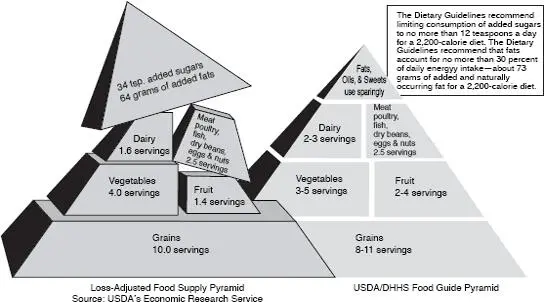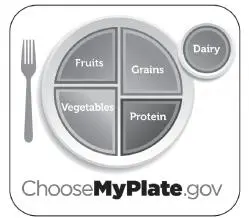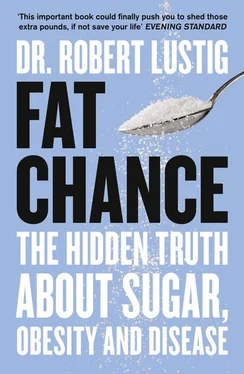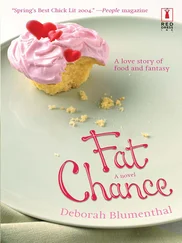Each of these people and industries have one thing in common: they are trying to make a buck off the misfortunes of the obese, to the tune of $117 billion a year. And they’re all charging retail. Out of pocket, cash on the barrelhead. No insurance reimbursements here. No discounts. In case you hadn’t noticed, the obese will do anything not to be obese, even throw their money away on “get-thin-quick” schemes. That’s why these industries are the obesity profiteers. Do any of their “solutions” work? Fat chance. If you just did what they told you, the fat would magically disappear. If it fails, it’s your fault – you must have been noncompliant! Yet another reason for the obese to be depressed. Think about it – if any of these books, diets, or programs actually worked for the entire population, there would be only one. The person who makes this discovery will likely win the Nobel Prize, move to a mansion in Tahiti, and be featured on Lifestyles of the Rich and Famous .
Seat 5: The Fat Activists
There’s nothing socially or medically wrong with being fit and fat; you’re doing better than the people out there who are thin and sedentary. But there is something medically wrong with being fat and sick. Especially if you’re suffering metabolically, which 80 percent of obese people are. If you fall into this category, you are costing society money in caring for your metabolic illnesses, reducing productivity, and clogging up (and bringing down) the health care system. Not to mention digging yourself an early grave! The vocal proponents for the political and social rights of the obese, primarily the National Association to Advance Fat Acceptance (NAAFA), say, “Being fat is a badge of honor. Be fit and fat, be fat and proud.” No victimization here. And I agree. But NAAFA is also opposed to academic obesity research where its primary goal is weight loss – because why would you investigate a condition that is totally normal? They don’t think attention should be paid to how much kids weigh. This is puzzling to me. There is something highly paradoxical about enabling your child to be fat and sick. The majority of obese kids will be diabetic and cardiac cripples by the time they’re fifty. The science and research that NAAFA’s policy would seem to exclude are critical to studying this epidemic and determining what we can do about it. It’s my job as a pediatrician to protect these kids from such misguided thinking.
Seat 6: The Commercial Food Industry
The commercial food industry responds to the obesity pandemic with two mantras. First, “Everyone is responsible for what goes into his or her mouth.” Is that true? What goes into our mouths depends on two things: selectivity and access. Second, “Any food can be part of a balanced diet.” True but irrelevant because, thanks to the food industry, we don’t have a balanced diet, and they’re the ones that unbalanced it. They are a major instigator of the obesity pandemic through both their actions and the kind of rhetoric they use to justify those actions. Corporations repeatedly say one thing, yet do another. McDonald’s now advertises a healthier menu, with commercials featuring slim people in exercise clothes eating salads. However, the vast majority of people entering McDonald’s, even if they come in with the idea of eating a salad, instead order a Big Mac and fries. And McDonald’s is well aware of this. Its recent billboard campaign, “Crafted for Your Craving,” says all you need to know. Carl’s Jr.’s promotion of the “Western Bacon Six Dollar Burger,” which has a whopping 1,030 calories and 55 grams of fat, generally depicts fit and attractive people consuming the company’s fare with relish. Do you really think they would continue to be thin if they ate this on a regular basis?
Food has become a commodity (see chapter 21), with foodstuffs that can be stored being traded on the various commodities exchanges. Speculators can corner the market on anything, from pork bellies to orange juice, by betting how much the price will rise and fall. And it’s because individual foods are treated as commodities that the downstream effects of changes in the food supply, and subsequently food prices, are being felt worldwide (see chapter 21). Cheap food means political stability. There is an imperative to keep food highly available and the prices as low as possible. Everyone is for cheap food. The United States spends 7 percent of its gross domestic product (GDP) on food, which allows the populace to buy more DVDs and iPads and take more vacations. But cheaper food, loaded with preservatives for longer shelf life, costs you on the tail end, and way more than all your gadgets and vacations put together (with interest).
Seat 7: The Federal Government
Our government is extraordinarily conflicted about where it should stand on the obesity pandemic. In 2003, former U.S. surgeon general Richard Carmona stated that obesity was an issue of national security, a stance that current surgeon general Regina Benjamin has upheld (despite the fact that she herself is obese) and one to which the U.S. Army has signed on. The public health branches of the government tell us that we eat too much and exercise too little. Mrs. Obama’s Let’s Move! campaign centers on the idea that childhood obesity can be battled by planting school vegetable gardens, encouraging kids to get out and exercise, and remaking the School Nutrition Act. All necessary, but not sufficient .
The U.S. government does everything it can to keep food cheap (see chapter 16). The USDA has chosen not to accept any responsibility for its role in the obesity pandemic, continuing to market our Western diet around the world. The Farm Bill (see chapter 21) maintains food subsidies to keep farmers employed and growing more crops. The growers make their profits on volume. The food processors make big markups and pass them along to the consumer. And the USDA subsidizes food entitlement programs to the poor, such as the Supplemental Nutrition Assistance Program (SNAP, formerly known as food stamps) and the Women, Infants, and Children nutrition program (or WIC, which supplies low-income infants and their mothers with food and health care), to keep them alive and complacent. Until 2007, WIC bowed to the pressure of food lobbyists. The foodstuffs provided were largely unhealthy, and included white bread and high-sugar juices.
The “Food Pyramid,” the federal nutrition guide released in 1974 (see figure 2.2a) and revised every five years, cultimating with “MyPyramid” in 2005, was never based on science. Indeed it was top and bottom heavy – hardly a pyramid. In response to calls for revision from many in the medical community, the Food Pyramid was deep-sixed in 2011. “MyPyramid” has now morphed into “MyPlate” (see figure 2.2b). The most recent guidance from the Dietary Guidelines Advisory Committee (DGAC), released in 2010, says that obesity is a problem (shocker) so we should all eat less fat, sugar, and salt. We’re all supposed to eat more fruits and vegetables, and less of everything else. This is stating the obvious. Don’t we already know this? Eat less? How? If we could eat less, there wouldn’t be an obesity pandemic. But we can’t.

Fig. 2.2a. The Ancient Pyramids.The traditional USDA Food Pyramid, circa 2005, which advised us to eat more grains and less fat and sugar. Alongside it, what Americans actually ate – more like an hourglass than a pyramid.

Fig. 2.2b. The Modern Merry-Go-Round.Under pressure from consumer groups and in response to the emerging science, the Pyramid was relegated to ancient history, and MyPlate was adopted by the USDA in 2011. MyPlate advises us to eat approximately half a plate of vegetables or fruits, one quarter fiber-containing starch such as brown rice, and one quarter protein, preferably low-fat. It’s too early to tell if this change will have any effect on American eating habits.
Читать дальше














